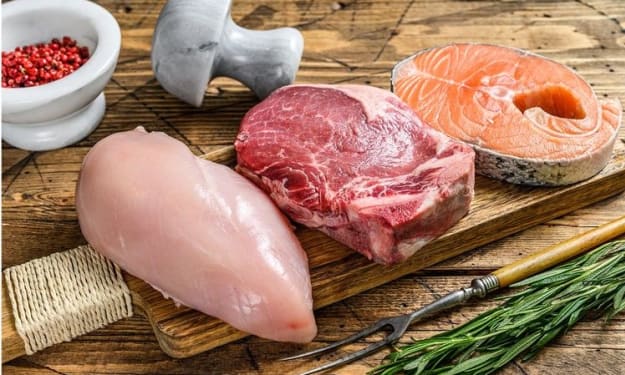Gluten-Free 101.
Everything You Need to Know to Live a Healthy and Delicious Gluten-Free Lifestyle.

Gluten-free diets have been gaining popularity in recent years, but for some people, it's more than just a trend. For those with celiac disease or gluten intolerance, going gluten-free is a necessity. But what exactly is gluten, and why do some people need to avoid it? In this article, we'll cover the basics of gluten-free eating and provide some tips and real-life examples to inspire you on your gluten-free journey.
First off, let's talk about what gluten is. Gluten is a protein found in wheat, barley, and rye. It's what gives bread its chewy texture and helps it rise. For people with celiac disease, gluten can trigger an immune response that damages the lining of the small intestine. This can lead to a range of symptoms, including abdominal pain, bloating, diarrhea, and fatigue. For those with gluten intolerance, consuming gluten can cause similar symptoms but without the damage to the small intestine.
So, if you've been diagnosed with celiac disease or gluten intolerance, it's important to avoid gluten-containing foods. This includes obvious sources like bread, pasta, and baked goods, but also less obvious sources like sauces, dressings, and even beer.
But going gluten-free doesn't mean you have to give up all your favorite foods. There are plenty of gluten-free alternatives available, and with a little creativity, you can still enjoy delicious meals and snacks. Here are some tips to get you started:
1. Focus on whole, unprocessed foods. Fresh fruits and vegetables, lean proteins, and healthy fats are all naturally gluten-free. By focusing on these foods, you'll not only avoid gluten but also nourish your body with essential nutrients.
2. Read labels carefully. Gluten can hide in unexpected places, so it's important to read labels carefully. Look for "gluten-free" certification or ingredients lists that don't include wheat, barley, or rye.
3. Experiment with gluten-free flours. There are many gluten-free flours available, including almond flour, coconut flour, and rice flour. Experiment with different flours to find what works best for you.
4. Find gluten-free substitutes. There are many gluten-free substitutes available, including gluten-free bread, pasta, and baked goods. While they may not taste exactly the same as their gluten-containing counterparts, they can still be delicious and satisfying.
Now, let's look at some real-life examples of gluten-free meals and snacks:

1. Breakfast: Gluten-Free Banana Pancakes
Ingredients:
- 1 ripe banana
- 2 eggs
- 1/4 cup almond flour
- 1/4 teaspoon baking powder
- Pinch of salt
- Butter or oil for cooking
Instructions:
1. Mash the banana in a bowl.
2. Add the eggs, almond flour, baking powder, and salt. Mix well.
3. Heat a non-stick pan over medium heat. Add a small amount of butter or oil.
4. Spoon the batter onto the pan to form pancakes. Cook for 2-3 minutes on each side, until golden brown.
5. Serve with fresh fruit or maple syrup.

2. Lunch: Gluten-Free Veggie Wrap
Ingredients:
- Gluten-free wrap
- Hummus
- Sliced cucumber
- Sliced bell pepper
- Sliced avocado
- Sprouts
- Salt and pepper
Instructions:
1. Spread hummus on the gluten-free wrap.
2. Layer on the sliced cucumber, bell pepper, avocado, and sprouts.
3. Sprinkle with salt and pepper.
4. Roll up the wrap and enjoy.
3. Dinner: Gluten-Free Chicken Alfredo
Ingredients:
- Gluten-free pasta
- 1 pound boneless, skinless chicken breast, cut into bite-sized pieces
- 2 tablespoons olive oil
- 2 cloves garlic, minced
- 1 cup heavy cream
- 1/2 cup grated Parmesan cheese
- Salt and pepper
- Chopped fresh parsley
Instructions:
1. Cook the gluten-free pasta according to package instructions.
2. Heat the olive oil in a pan over medium-high heat. Add the chicken and garlic. Cook for 5-7 minutes, until chicken is cooked through.
3. Add the heavy cream and Parmesan cheese to the pan. Stir until the cheese is melted and the sauce is heated through.
4. Season with salt and pepper to taste.
5. Serve the chicken Alfredo over the gluten-free pasta. Garnish with chopped fresh parsley.
In conclusion, going gluten-free may seem daunting at first, but with a little knowledge and creativity, it can be a delicious and healthy way of eating. By focusing on whole, unprocessed foods, reading labels carefully, experimenting with gluten-free flours, and finding gluten-free substitutes, you can enjoy a variety of delicious meals and snacks. So, don't let a gluten-free diet hold you back from enjoying your favorite foods. Get creative and have fun with it!
About the Creator
Pertunia Lenesa
Unlock the power of words with my articles. From health to lifestyle, my writing offers valuable insights and inspiration for all readers. Join me on this journey of growth and discovery.






Comments
There are no comments for this story
Be the first to respond and start the conversation.